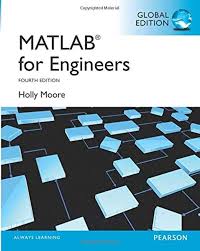An Engineer's Guide to MATLAB: A Comprehensive Overview
Abstract
MATLAB, a powerful mathematical computing software, is widely used by engineers and scientists across various disciplines. This white paper provides a comprehensive guide to MATLAB, covering its core functionalities, advanced techniques, and practical applications. We will explore topics such as matrix operations, numerical analysis, data visualization, signal processing, and control systems. Additionally, we will discuss the integration of MATLAB with other software tools and its role in modern engineering workflows.
1. Introduction to MATLAB
MATLAB is a high-level programming language and interactive environment for numerical computation, visualization, and programming.
2. Core Functionalities
2.1 Matrix Operations
- Creating and manipulating matrices
- Performing basic arithmetic operations
- Solving linear equations
- Eigenvalue and eigenvector analysis
2.2 Numerical Analysis
- Numerical integration and differentiation
- Interpolation and curve fitting
- Root finding and optimization
- Solving differential equations
2.3 Data Visualization
- 2D and 3D plotting
- Customizing plots with labels, titles, and legends
- Animation and interactive plots
2.4 Signal Processing
- Signal generation and analysis
- Filtering and noise reduction
- Fourier analysis and spectral estimation
- Digital signal processing techniques
2.5 Control Systems
- System modeling and simulation
- Control system design and analysis
- Linear control systems
- Nonlinear control systems
3. Advanced Techniques
3.1 Symbolic Math Toolbox
- Symbolic computations and algebraic manipulations
- Solving differential equations symbolically
- Generating LaTeX code
3.2 Optimization Toolbox
- Linear and nonlinear optimization
- Constrained and unconstrained optimization
- Multi-objective optimization
3.3 Simulink
- Modeling, simulating, and analyzing dynamic systems
- Creating block diagrams and state-space models
- Simulating real-time systems
4. Practical Applications
4.1 Electrical Engineering
- Circuit simulation and analysis
- Signal processing and communication systems
- Control systems design
4.2 Mechanical Engineering
- Finite element analysis
- Dynamic system simulation
- Control systems for robotics and automation
4.3 Civil Engineering
- Structural analysis and design
- Geotechnical engineering
- Hydraulics and hydrology
4.4 Aerospace Engineering
- Aerodynamics and flight mechanics
- Control systems for aircraft and spacecraft
- Satellite orbit simulation
5. MATLAB and Other Tools
MATLAB can be integrated with other software tools to enhance its capabilities. Some common integrations include:
- Python: Using MATLAB Engine API to call MATLAB functions from Python scripts
- C/C++: Interfacing with C/C++ code for performance-critical operations
- Excel: Importing and exporting data between MATLAB and Excel
6. Conclusion
MATLAB is a versatile tool that empowers engineers to solve complex problems efficiently. By mastering its core functionalities and advanced techniques, engineers can streamline their workflows, improve productivity, and achieve innovative results. As MATLAB continues to evolve, it will remain an indispensable tool for engineers across various disciplines.
References
- MATLAB Documentation: mathworks.com
- Cleve Moler, "Numerical Computing with MATLAB"
- Steven T. Karris, "MATLAB for Engineers"
- Amos Gilat, "MATLAB: An Introduction with Applications"
- Various MATLAB tutorials and online resources
[Note: Consider adding specific code examples, visualizations, and case studies to illustrate the concepts and applications discussed in the white paper. Additionally, you may want to include a section on best practices for MATLAB programming, such as code optimization, debugging, and version control.]
By following this comprehensive guide, engineers can effectively leverage MATLAB to tackle a wide range of engineering challenges and contribute to advancements in various fields.



